You’ve got your product out in the market. Now’s the time to iterate.
But, it’s usually challenging to assess what’s the right way to go about it – how much of iteration should be that from user feedback versus founder’s vision for the product?
And, how do you also tell the difference between what feedback to incorporate?
We asked some of the industry experts about how do they merge both the aspects and finalize the features of the product.
We also asked them if there is a particular way the product iteration process should look like. Here is what they have to say:
#1 Not listening to the user’s feedback at all can be an issue

Jeff Lash, VP and group director, Go-to-Market at SiriusDecisions
One of the biggest mistakes that I think is often made by entrepreneurs is that they are so passionate and opinionated about their company/product that they don’t listen to feedback – not just from buyers or customers, but even from others within the company or advisors.
This is a problem I see not just with tech entrepreneurs but also on a regular basis with product managers at the B2B companies we work with at SiriusDecisions. If I had to make a blanket statement, it’s that most founders and product managers don’t listen enough to customers or iterate enough based on customer feedback.
However, I don’t necessarily agree with the idea that its user feedback “versus” the founder’s vision. Ideally, the founder’s vision should be based on identified customer needs and refined based on feedback. If the founder or product manager has a vision that is based on an interesting idea but isn’t based in data or evidence about what’s going on in the market, it’s probably doomed to fail.
Instead, if the vision comes from a deep understanding of buyers and users and their needs, then it’s not as much about a ratio between feedback versus vision so much as it is at how the vision gets adjusted based on what is learned about the market.
The often-cited quote from German military strategist Helmuth von Moltke describes this well: – “No battle plan survives contact with the enemy.” It’s great to have a plan, but you need to recognize how that the plan will always need to change.
There’s one other important element to mention, because even though I think that many founders and product managers don’t put enough stock in buyer and customer feedback, there is an opposite problem that can happen, particularly in the early stages of a company or product.
Some companies get the ratio wrong and listen way too much to one big current or potential customer. When you’re trying to get product-market fit or scrambling to get some revenue, it’s very tempting when a big potential deal comes along that would provide a big boost – but often those come with some “strings attached” like asking for functionality that may not appeal to any other customers or even redirecting your entire product roadmap in a new direction.
While buyer and customer feedback is important, it’s crucial to make sure that the feedback is representative of a broader market opportunity and won’t point you in the wrong direction when you try to grow and scale.
#2 Unique value proposition should be the major criterion for making decisions
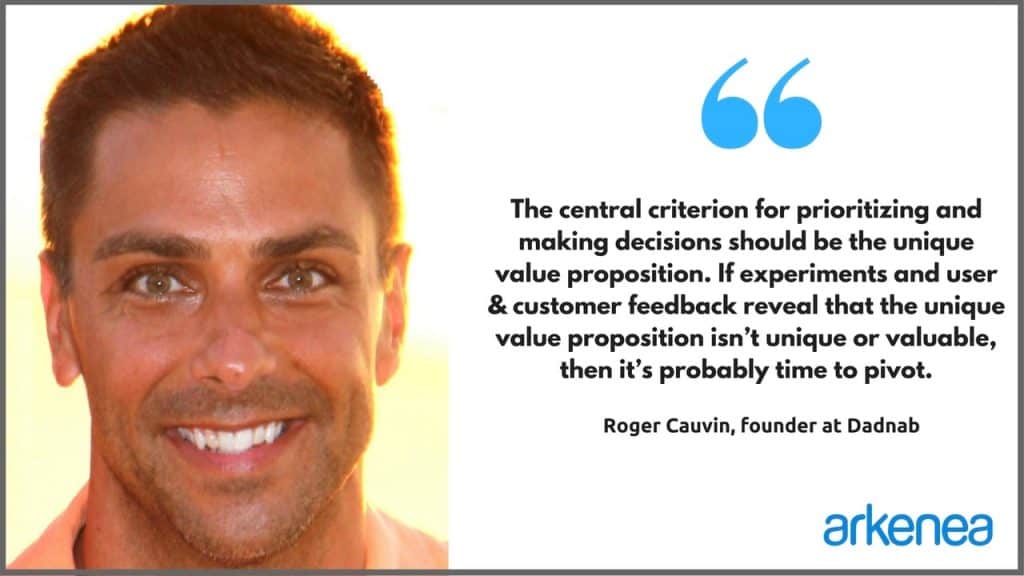
Roger Cauvin, founder at Dadnab
Product strategy should drive all product decisions. Product strategy is a set of core hypotheses, including the unsolved problems we believe exist in the marketplace, the prospective customers we believe will pay to solve them, the channels we believe we can use to reach those customers, and the product’s unique value proposition (which we can determine using a competitive mindshare map). Lean startup practitioners document these sorts of strategic hypotheses in a lean canvas.
As product teams consider features or user stories to implement, experiments to run, and other roadmap items, they should always evaluate and prioritize them in terms of the product strategy. Specifically, and most importantly, they should ask, “To what extent will implementing this item test or support the unique value proposition?”
Feedback from users and prospective customers is useful to:
- Understand whether the product or a feature is, in fact, delivering the unique value proposition.
- Collect suggested features that could support the unique value proposition.
- Determining whether the unique value proposition is, actually, unique and valuable.
But again, the central criterion for prioritizing and making decisions should be the unique value proposition. If experiments, user and customer feedback reveal that the unique value proposition isn’t unique or valuable, then it’s probably time to “pivot” (consider a new unique value proposition).
#3 Let the user feel in control of the product
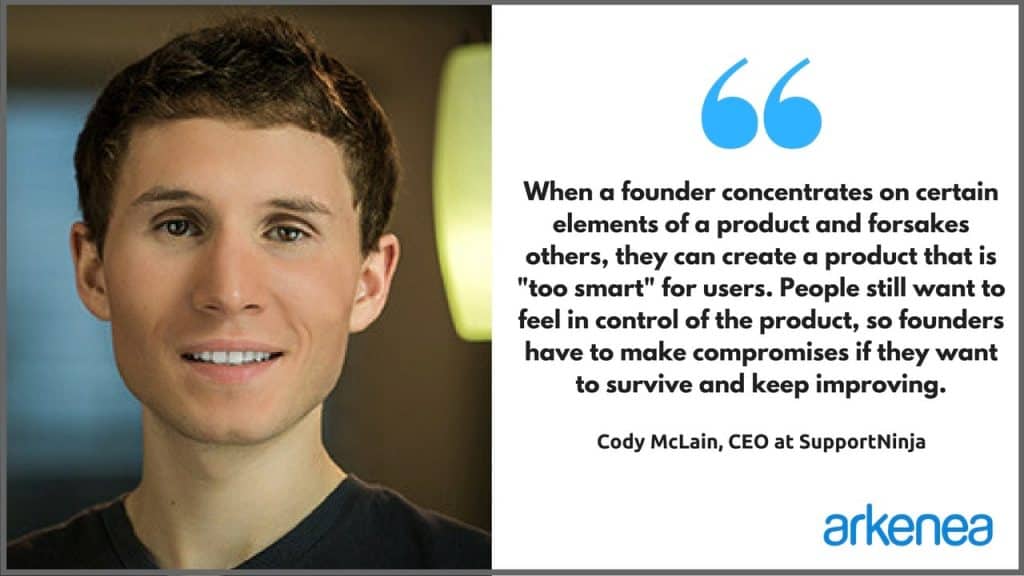
Cody McLain, CEO at SupportNinja
Many people often cite Steve Jobs’ user-centric design paradigm, where many changes in Apple’s design were made based on user feedback. The only way to truly figure out the ratio between iterative development based on feedback and vision is to have a broad vision.
Let’s move away from tech and use the vision to build a profitable and sustainable business in textiles and manufacturing as an example:
Perhaps the manufacturer has been receiving feedback from clients requesting a faster turn-around time to meet their cycle requirements. This is feedback, however, it requires the manufacturer to make changes to their operational strategy. Should they proceed with making those changes?
The vision was to build a profitable and sustainable business in textiles and manufacturing, in order to achieve that end, they will have to pivot.
I believe that user feedback is an essential addition to planned enhancements.
Going back to tech, if there’s no feedback, whatever enhancement that is later added to the product may not be intuitive. The worst case involves founders that are obsessed with minor details; these individuals forget that the user is the one who interacts with the whole product.
When a founder concentrates on certain elements of a product and forsakes others, they can create a product that is “too smart” for users. People still want to feel in control of the product, so founders have to make compromises if they want to survive and keep improving.
The founder’s vision should inform the development life cycle of the product in the beginning until a prototype is developed. From the point of having a usable prototype, or having the product in “beta” and onwards, the product will start taking shape depending on how it’s used.
It may even surprise you how said product’s utility surpasses the initial vision for it!
#4 Focus on the big change to be made

Larry Kim, founder at Wordstream
Usually there are big and little types of changes. Big changes are things like what should the thing do. Little changes are like incremental improvements to the existing idea. The founder’s vision should be the big change and use user feedback for the little changes.
#5 Understand the user’s pain point and give the solution

Abhiram Annangi, co-founder & data scientist at Bond.ai
Don’t ask customers what they want, understand what their struggles are and you intelligently craft a solution for it.
We, at Bond.ai follow a Human Centered Design approach where the process starts with identifying the people you’re designing for and ends with new solutions that are tailor made to suit their needs. This makes sure that there are minimal iterations while designing the product, as even before designing the product you tend to get the real pulse of the user. This typically boils down to three phases:
In the first phase, we’ll learn directly from the people we’re designing for as we immerse ourselves in their lives by building a deep empathy with the people we’re designing for and come to deeply understand their needs and the their struggles.
In the next phase, we build a bunch of prototypes to address their needs and share them with the people we are designing for and finally implementing the most innovative solution which bonds the most with the user as part of the third phase.
You’ll know that your solution will be a success because you’ve kept the very people you’re looking to serve at the heart of the entire process, hence significantly reducing if not preventing the need for any product iterations.
#6 Split focus is a real problem for product clarity
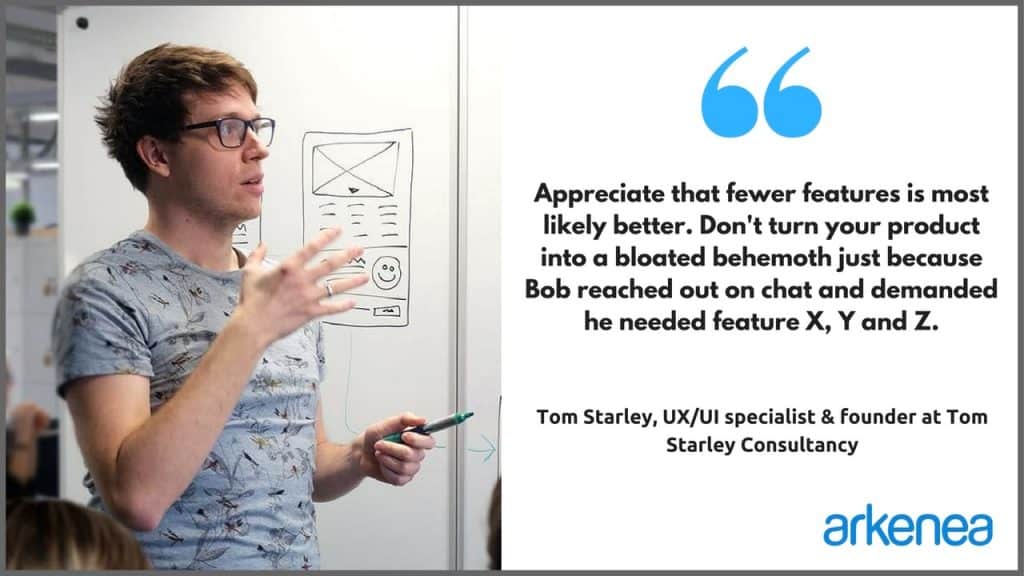
Tom Starley, UX/UI specialist & founder at Tom Starley Consultancy
This is a great question, the best-laid feature roadmaps can easily go flying out the window when user testing or due to customers requesting, strike that demanding change. At times it can feel like you’re being pulled in every direction, split focus is a real problem for product clarity.
I’ve been in this position multiple times as a founder but also as a UX expert and it can be a tricky beast to handle.
How you handle this predicament depends on the stage and size of your outfit. Here’s a couple of basic tips I’ve used in the past for good results with growing business and start ups:
- Appreciate that fewer features is most likely better. Don’t turn your product into a bloated behemoth just because Bob reached out on chat and demanded he needed feature X, Y and Z.
- Observe and understand what makes your product special. Use your intuition as a founder to stay true to your vision.
- With the above fresh in your mind, appreciate the value in user testing to remove obvious barriers and pain points but also to take onboard potential future features. Remember these need to be validated, though.
- As a rule of thumb concentrate your time at the top of your sales funnel and move down. This enables you to convert more users as you progress meaning more eyes on the prize as you continue to refine.
- Make sure you really know your audience. Truly knowing their problems lets you see the true direction of your product. Learning to validate your customer assumptions is vitally important and provides a lot of direction.
#7 Identify your market wisely

Joe Cotellese, director of product at AWeber
This is a really great question because it speaks to a core issue that faces product teams – misalignment.
A clear product vision should help influence who your target market is. When that happens, the customers that you attract more or less align with the vision. Customer feature requests are easier to take into account because they shouldn’t swing too far from where a founder wants to take a product.
Things get a little trickier the more specific the founder is in the implementation of the vision. Then there is an opportunity for misalignment if the founder is out of touch with the customer. It’s important to use customer research to backup any decisions that might deviate from specific feature requests from the founder.
Of course you should never completely discount the core vision from the founder and only listen to your customers. I’m reminded of a quote by the CEO of Nokia after they were acquired by Microsoft.
He said, “We didn’t do anything wrong, but somehow, we lost.” I have no insight into what went on at Nokia but I imagine the feedback they received from their customers wasn’t “you should build a multipurpose touch tablet that acts as a phone, browser and music player.”
#8 Find a market fit for each feature of the product before moving on

Sachin Rekhi, startup advisor, product executive, and Blogger
Find product/market fit for each launched feature before moving on to new experiences. Often when you first launch a product feature, it fails to resonate with customers the way you anticipated.
Because of this it’s important to build in sufficient time into your roadmap to iterate and optimize these features to get them to resonate with customers before moving on to the next big thing. But then when do you move on? When you decide the feature isn’t going to work or you reach product/market fit with the feature. Feature retention is a great way to assess that.
There will always be more tweaks and optimizations to be done even beyond this point, but at least at this point you can move on to the next part of your vision knowing that your existing experiences are stable.
#9 Take constant and incremental step towards the vision
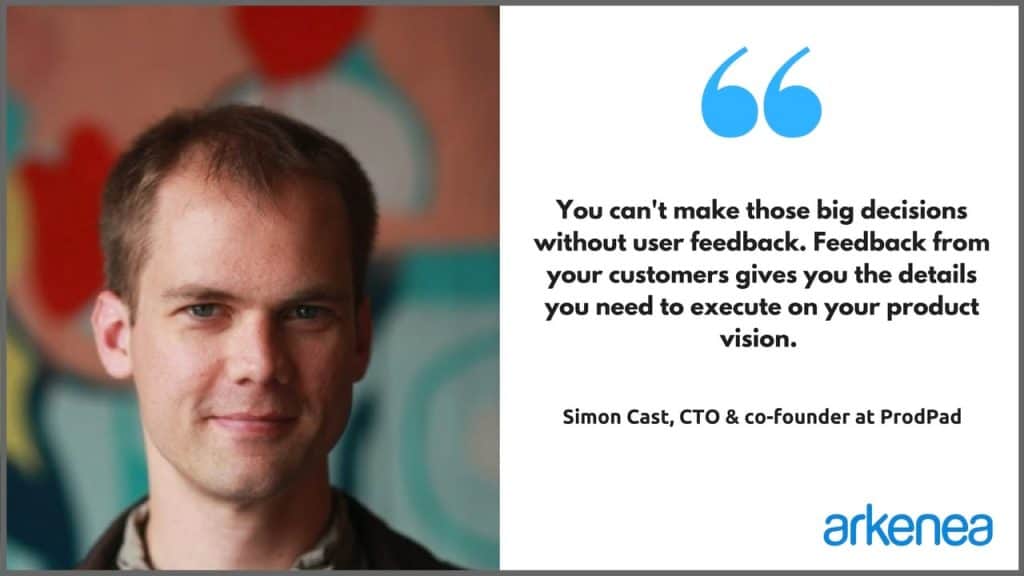
Simon Cast, CTO & co-founder at ProdPad
If you have a product vision, I hope it’s big. Because a great product vision isn’t a blueprint or a plan. It’s a worldview, something that you’ll be working towards in different ways, with different people and different technologies as your product grows and matures over time. You can’t make those decisions without user feedback.
Feedback from your customers gives you the details you need to execute on your product vision. The product experience? The functionality? The brand & tone of voice? All of this comes from paying close attention to what your customers respond to best. In other words, your vision should be a constant, and the steps you take to get there are careful, incremental ones.
#10 Add new features along with retaining the existing functionality
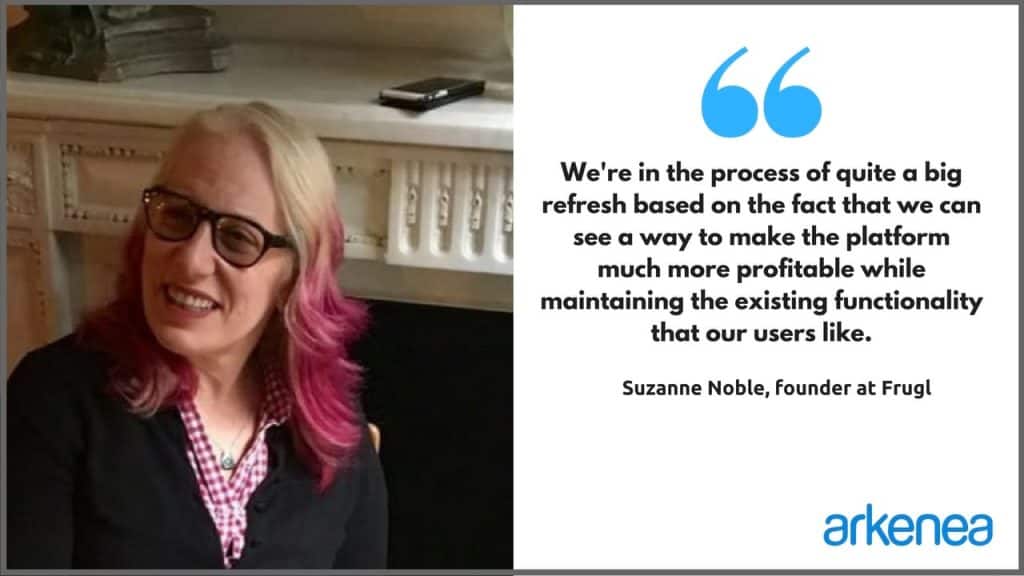
Suzanne Noble, founder at Frugl
Balancing a founder’s vision with customer feedback is a tricky one but, for us at Frugl, it’s mainly driven by finances and usefulness. We’re in the process of quite a big refresh based on the fact that we can see a way to make the platform much more profitable while maintaining the existing functionality that our users like.
In the past we’ve had to iterate mainly from the demands of our customers who were finding certain aspects of the site hard to navigate and we could see how that was preventing them from wanting to use it. Now that those challenges have been overcome, we’ve taken the lead in the next iteration.
